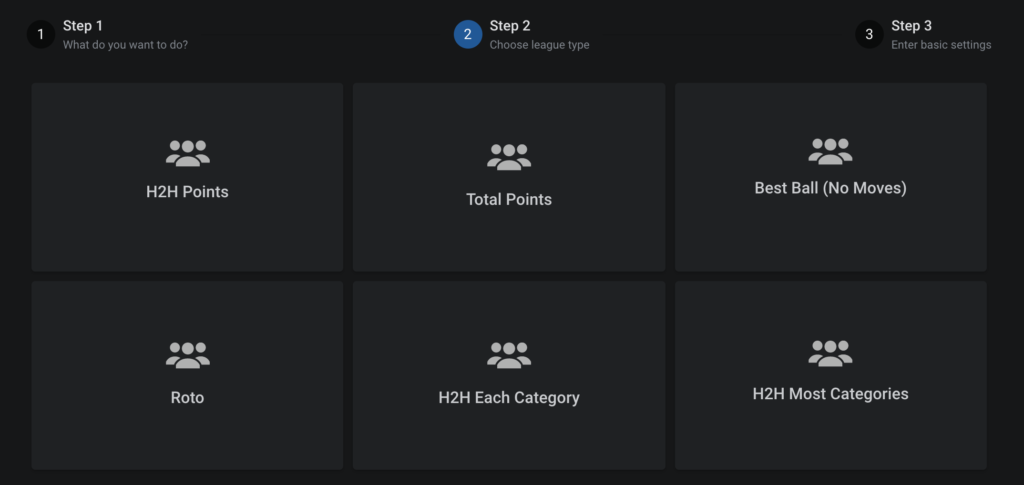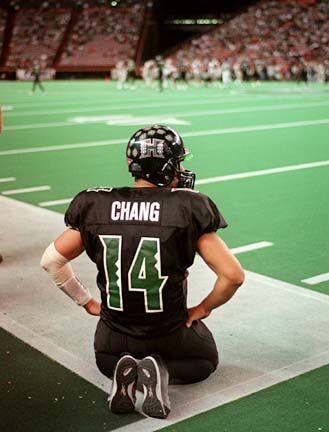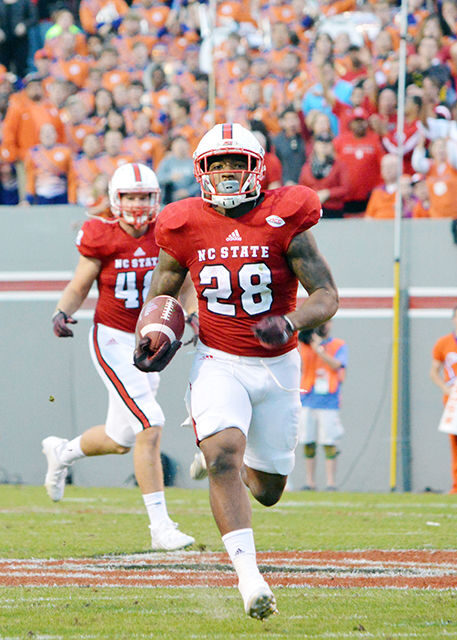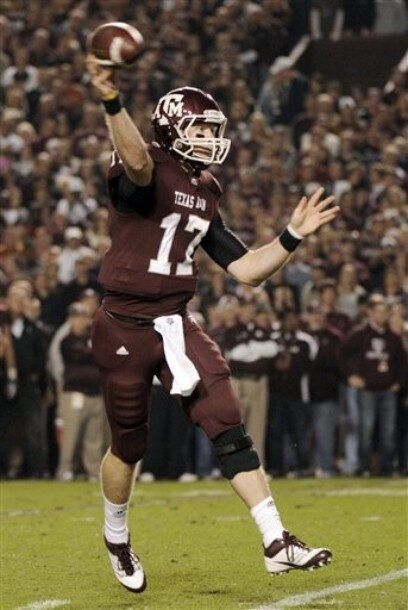The Ultimate Guide to College Fantasy Football League Rules Setup
So you want to play college fantasy football, but you don’t know where to start. Like many across the country, you are looking to take your fantasy sports profile to the next level by getting into college fantasy football, but you don’t know how or where to begin. Here at CFBDynasty we’ve got you covered and we’ll try to provide as many guidelines as possible to make your experience the best it can be.

OVERVIEW:
As a precursor to this article, we want to set the stage. We are going to take for granted that you understand the basic operation of fantasy football, and are coming over with some experience in professional football leagues. If you are NOT and this is your first foray, you may be biting off more than you can chew. College fantasy is the chess to pro football’s checkers. Gotta walk before you can run. If you insist on starting here, proceed and your own risk and know that jumping in with no prior knowledge of fantasy football will put you at a HUGE disadvantage against more seasoned college players, far more than in the pro game.
If you are in the most likely group of players with pro fantasy football experience, don’t think you know it all. While the mechanics of college fantasy football are the same as the pros, the player pool and types of players you may be looking for could vary wildly from the professional game.
This article will cover the most common options and points of note in the categories of:
PLAYER POOL
TYPE OF LEAGUE
SCORING SYSTEM
TRANSACTION POLICIES
We’ll end with my personal favorite –
The LEAGUE CONSTITUTION
One thing to keep in mind as we go along – not all options fit with others. You can’t do a DYNASTY league with a ‘senior only’ player pool, etc…
With all that out of the way, we can proceed directly into our first topic:
Step 1 - Set the Player Pool
You may be asking yourself: “Self – why did this dude not start off with the TYPE OF LEAGUE? Doesn’t that come first!?!” To that, I would say simmer down, simmer down. The TYPE OF LEAGUE you choose will depend dramatically on your understanding of the player pool.
In the NFL you have 32 teams with 53 man rosters (totaling 1696 players). All the teams are comprised of a similar quality of player, and on ‘any given Sunday’ any NFL team could rise to victory or lay an egg of defeat. The difference between victory and defeat is razor-thin, so drafting and making the right player pickups is of the utmost importance. You will never have a Patrick Mahomes on the waiver wire, so if you want him you better get him while you can.
In college, you are dealing with a MUCH different player pool. There are 130 teams in FBS college football, and for sake of argument, we will say there are up to 125 players per team. That is 16,250 players! Granted, not all of these players are at ‘fantasy eligible positions’, but the take-home point here is this: you have 4x as many teams and nearly 10x as many players to keep track of! That’s a LOT of players and teams to sift through.
One of the other differences with the college game in comparison to the pro game is this: If you hit on a hall of fame type QB you might have access to them for the next 10-15 years (see Philip Rivers, Tom Brady, Drew Brees, etc…). In college, no matter how good a player may be, you will only have a MAXIMUM of four seasons to revel in the spoils of their output. Their value may be HIGH, but their college shelf life is limited.
****
Another misconception that many without college fantasy experience may have is the thought that “The best players are at the biggest schools”. Granted, if you are looking for NFL potential, power 5 conference schools (ACC SEC Big10 Big12 and Pac12) do have the lion’s share of the top players (hence why they are the POWER 5), but if your goal is COLLEGE dominance you need to look deep into group of five schools as well (American, Sun Belt, Mountain West, Mid-American, Conference USA). There is also a growing number of independents that run the gamut from top tier teams (like Notre Dame) to teams like UMass and UConn that are barely hanging onto their FBS lives.
If you are someone that wants to LIMIT the player pool, there are a few ways to do it:
* Power 5 (+ indies) only: You will have access to the most talked about (and most covered) teams in the country. Access to viewing will be easiest as all the major conferences have solid TV deals as well.
* Group of 5 only: Just because this is not the top tier conferences does not mean there isn’t quality. In recent years schools like Hawaii, Boise State, and Bowling Green have produced college fantasy studs. In 2018 the #2 ranked fantasy scoring defense in the country was… you guessed it… Fresno State. The biggest drawback to going group of 5 only is ‘money games’. Normally the first two weeks of the season and on or around week #12 (college fantasy playoffs) there will be some duds in here where teams are taking big money games just to get wrecked by the Alabamas of the world. Be very careful if going group of 5 only and having your playoffs decided by the lopsided money grabs.
* Seniors only: This will only work in yearly redraft leagues or college to pro leagues. The top upperclassmen are the only ones available. The player pool is shallow, but the rewards could be grand if you pick wisely.
* Freshman only: Don’t even consider this unless you are a diehard. Those in my circle are, and many attend the high school all-star games looking for the top incoming talent. In our college to pro dynasties, there are a couple players that were evaluated at the high school level that are still on that same owner’s pro squad now (see Julio Jones).
The great thing about setting up your college fantasy league on Fantrax (which all of the screenshots are from) is that you have complete customizability on team selection!

Step 2 - Choose the League Type
There are a few different options here to choose from and they will be wildly impacted by the player pool you’ve already considered, and the transaction policies you consider below.
SINGLE SEASON/RE-DRAFT (No keepers)
KEEPER (College Only: Limited Keepers)
DYNASTY (College Only: Full Roster)
DYNASTY (College to Pro)
BEST BALL (No Moves In-season)
ROTO (Playoff Alternative)

Just like in the pro game single-season and dynasty leagues are available. As stated earlier in the article, you can couple any of these with any player pool option (except for freshmen / senior only with a college only dynasty). Keep in mind what was stated in overview – the MAX you can get from a single player in college production is 4 years (and rarely does a player have four years of solid fantasy production).
SINGLE SEASON/RE-DRAFT (No keepers): This gives each owner flexibility to rebuild their team every year. It gives hope to those on the bottom of the standings that they can reassert their dominance with just a single good draft. That being said, the biggest drawback here is having to do a full redraft every year.
KEEPER (College Only: Limited Keepers): Almost the same as a single-season league but allows a little continuity from season to season and rewards those owners that found some gems along the way.
DYNASTY (College Only: Full Roster): Remember – this is college, so barring a medical redshirt, the longest a player can possibly be on your team is 5 years (including a redshirt year) so you must always be thinking towards the future when drafting, while also not forsaking the current season. As stated earlier, in the pros you can find a hall of fame stud and potentially get production out of them for 10-15 years. In college, no matter how good they are, 5 years on your roster is the max.
DYNASTY (College to Pro): We could (and have) written full articles on the exhaustive ins and outs of how these dynasties work. In fantasy there is nothing more satisfying than seeing a player that you targeted early in his career bring you college AND pro glory. Personally, I drafted Patrick Mahomes before he was named the starter and Texas Tech. Seeing him produce record-setting numbers in college and also become the NFL MVP and a Superbowl champ has been awesome. I also held onto Andrew Luck through his entire career, much to the chagrin of another owner. He offered me something like 8756 trade proposals trying to pry him from my grasp, but I wasn’t giving up my first-ever draft pick in that league.
It does work both ways, however. A fellow owner could have a grasp on a similar player that you covet, and you may never be able to pull the trigger and get them, or you may overpay mightily to get them. The price to pay for a fantasy stud in a dynasty league is much different than in a single-season league.

If you choose this type, just know it is a long term commitment and you MUST have committed owners or the league will fail miserably. Owners cannot be prone to bow out after a single bad season.
BEST BALL(No Moves): In a Best Ball league, the simple difference is that there are NO in-season add/drops or pickups. You must have the best draft to win it all, awarded to the team with the most collective points.
ROTO (Playoff Alternative): The rotisserie fantasy league does not have head to head matchups nor does it have a playoff. The champion needs a balanced attack that’s good all season long, not allowing some 11-2 team to have an abnormally bad week in the playoffs. Lineups are still set weekly like a standard league. The scoring system customizations vary greatly but let’s consider you have a standard 12-team league. You select any number of metrics to gauge a fantasy team’s success, for example – passing yards, passing TD, rushing yards, rushing TD, receiving yards, and receiving TD. At the end of the league, the team in last place in a given category – scores a 1 and the team with the most, scores a 12. The team with the most points wins – arguable the most pure way to determine a champion.
Step 3 - Configure the Scoring System
We will not bore you with the typical ins and outs of the scoring system. Mechanically this works exactly the same as the pro game. There are four areas of emphasis in the college game to make SURE you have a good handle on:

QUARTERBACK: While bonuses for yardage and touchdown length are great, resisting the urge to do so in the college game is encouraged. Why? Because every week you could have a 500 yard QB with 7TDs. We had games early on where QBs were scoring in the 100s when we had bonuses in place. QB scoring was so lopsided that it became almost impossible to overcome a massive QB score even if you had RB and WR stud performances. Resist the urge so that QBs are a part of the weekly score and not the primary determiner of victory or defeat.
DEFENSE: The college game is much faster than the pros. The number of offensive plays on average is much higher, which means the ability to score more points in a game is there. We would suggest being a little more lenient with ‘score against’ penalties in college because even the top teams get in shootouts much more often. The college overtime procedure also ensures that a game that was previously close MUST see more points scored.

TE as WR or RB: Be careful with players such as Jaylen Samuels (whose position at NC State was so nebulous that the ACC actually created a new position designation for him: ‘H’). College is well known for players having multiple designations, and the league servers are sometimes slow to catch up. Utilize the OFFICIAL roster on the team’s own website and make your determination. Just make sure that your owners aren’t playing an RB at TE to gain a competitive advantage, WR as a TE, etc… Some of these position designations are tough to make a call on, but using the team generated roster can help in times of dispute.
RESIST BONUSES FOR PLAYERS PLAYING OUT OF POSITION: See above. College players routinely play in a position not normally listed on the roster. A 3rd string QB might get snaps at WR. A RB might throw a jump pass. These types of plays are much rarer in the pro game. Don’t throw off your league by giving too many bonuses for standard play execution.

Step 4 - Set Transaction Policies
One of the most interesting ways to increase the difficulty level for your league is to limit the number of transactions that can be made in a week or in a season. Some of these are only applicable in certain leagues / player pools / etc… but here are some that could be considered:
* Limit Number of pickups within a single season / single week: As discussed above, college football has thousands upon thousands of players on the waiver wire each week. Limiting the number of player pickups does a few things: 1. It makes the draft mean something. If you can restock your roster, without limitation, every week, then your draft becomes an exercise in futility. Why waste your time studying for a draft when you can alter your roster without consequence? 2. It makes those pickups that you DO make worth their weight in gold. Our C2P dynasties limit to only THREE moves in a season (with injury caveats of course).
You could also make this a weekly cap (one player move a week).
In a dynasty league, limiting waiver wire transactions is of utmost importance. If owners can make moves without penalty the player pool will deplete and the following year’s draft will be less enjoyable because there will be less ‘diamonds in the rough’ that slipped through everyone’s fingers in previous years.

* Allow trades between college and pro rosters: This can help an owner who has a wealth of talent in one league be able to parlay that depth into ammo to fill gaps in the other league. The biggest drawback here is that it makes the commish have to keep an eagle eye on trades so that said owner doesn’t deplete one roster consistently just to bolster the other. This throws off the balance of the league and could provide competitive advantages to other teams. What do I mean? If owner A depletes his college roster to build up their pro team, then the teams in his college division may get two easy wins, while the other teams may only get one. This could throw off the teams that make the playoffs as wild cards. This is a competitive disadvantage you want to avoid.
The same goes for trading subsequent year’s college draft picks. We allow a limited number of picks to be traded for upcoming drafts, but again, this only works if the owners are committed in the long term and are not gutting someone’s else future for their own immediate glory.
And now for the final section, and in my opinion the single most important one:
Step 5 - Establish The League Constitution
I cannot stress how important it is for your league to have a constitution that covers everything not included in the ‘league setup options’ on your selected host site. This goes above and beyond college fantasy football leagues, but it’s at the peak of importance on this topic. I would say that this is even MORE important that everything we’ve discussed above.
Why am I so adamant about this? Because no matter the quality of the host site, they cannot cover the intangibles. They don’t know you and your buddies (or your fellow combatants as they become on game day). They don’t know the points of emphasis that your league has. They also don’t know the loopholes that your league has historically run into that need to be closed.
The WORST thing that you can do is say ‘we’ll just talk about it – we’ll all remember what was said’. Everyone’s recollection of a prior conversation can differ. Especially if the league commissioner is involved in a dispute, you DON’T want them to have to be making a determination on a dispute that they have a vested interest in.
Let the constitution be the guide. It is a document that takes no sides. It cannot argue back. It has no feelings that can be hurt. It cannot be uninvited to Thanksgiving dinner if things don’t go their way.
You may be saying “Okay CFB – give us examples of rules that can only be handled in the constitution.”
I’ll give you THREE real-world situations that we covered in the CFB college dynasty league:
The ‘Ryan Tannehill Rule’: This rule is in place to cover situations where a player switches positions and how to handle it. College fantasy sites are notoriously slow in addressing these types of switches.
Let’s give you a little background: Ryan Tannehill started his career off as a WR at Texas A&M. Late in his junior year in (2010) he made the switch from WR to QB. His first game out he had 449 yards passing and 4 TDs. Per our host site he was still listed as a WR. One of our members started him at WR and basically had 2QBs. He advanced in the playoffs because of this.
OUR RULE: A player cannot be played KNOWINGLY out of position to gain a competitive advantage. If a school announces that xxx player is the starting QB, and he is listed with a different position designation, that player can ONLY be started at the position listed.
You might ask ‘how often does this happen?’ Often enough. We had to evoke this rule during the 2019 playoff run for Kentucky QB/RB Lynn Bowden. Having the rule in place from 9 years prior covered the situation. The constitution was consulted. The owner was informed. Boom. Done. Next.
The ‘Surprise Injury’ Rule: College football is NOT like the NFL when it comes to injury reports. Getting accurate information is difficult at best. Many times players are surprisingly held out of contests with no advance warning (this is even worse now in the era of players being able to redshirt with 4 or fewer games played). You feel like you do everything you can to manage your roster with laser-like precision, but situations like this can collapse even the best roster management plan.
OUR RULE: Prior to game time, an owner can designate a ‘backup player’ to be activated if a player does not play. Must be communicated to the opponent and the commissioner.

The ‘I left football’ Rule: This is ESPECIALLY important in dynasty leagues like ours with limited pickups. A player leaving football altogether for any reason (career-ending injury, concussions, personal reasons, etc…) can destroy a season.
OUR RULE: If a player leaves for the above circumstances, you can drop the player without penalty and pick up his direct replacement *on the same team*.
These are just examples of the rules we use. You could apply them differently in your league. We aren’t saying the way that we utilize them is right for everyone, but it works for us.
Some other possible rules only covered in the constitution (we don’t use all these – they are just examples):
* Penalties for not paying league dues on time
* Penalties for coming in last place
* Guidelines for teams that continually decimate their teams through terrible trades (this is more for the habitual snakes that take advantage of newer owners, subsequently throwing the league out of balance and CAUSING teams to be decimated)
* If it’s a college / pro league: Can you trade college and pro players and future draft picks in the same trade?
* How do you handle ties?
* How do you handle a dispute if the commissioner’s team is involved?
* How do you handle situations where there is a turnover followed by another turnover in the same play?
* How do you score a fumble recovery for a touchdown by an offensive player?
Remember: 97% or more of what makes the league run will be covered in typical league setup. 3% or less will be ‘oddity’ situations. It’s that 3% that can ruin the other 97%. Be prepared and proactively address those situations.
******
So there you have it. Is there something that we didn’t cover that you think we should have? Do you have a personal experience in your league that you think would be worthwhile for our readership to know about? Let us know and maybe we will get it into another installment!

Do y’all by chance have an article y’all wrote about how you run your DYNASTY (College to Pro) league or would you be willing to share. Setup, league size, rules abs regulations. We are hoping to use someone’s else setup to get started and form it to our group of guys over time. Thanks.